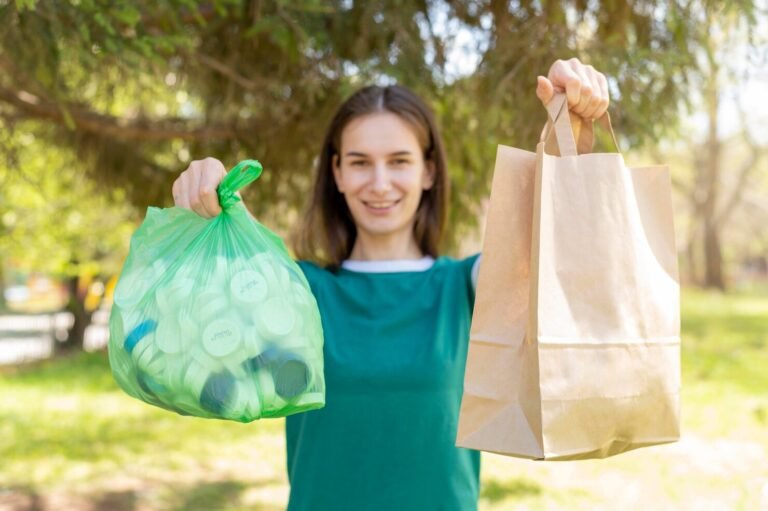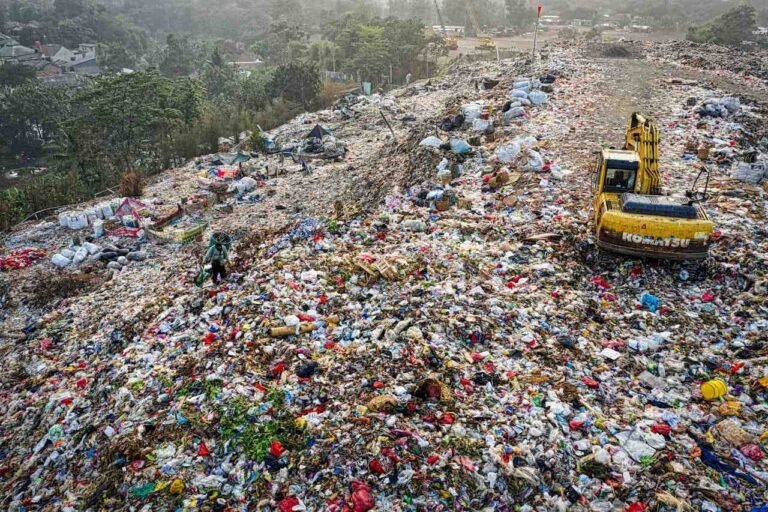Why Is Plastic Pollution Bad for the Environment? Understanding Its Impact and Solutions
Plastics are lightweight materials used in various applications—from construction and agriculture to electronics and healthcare. It’s no surprise that plastic debris is found in almost every corner of the earth. Landfills are filled with different types of plastic waste, especially waste from food and beverage packaging. Plastic pollution remains one of the most pressing environmental challenges of our time.
According to a study by Jambeck et al. (2015), 4.8 to 12.7 million metric tons of plastics end up in the ocean every year. Microplastics in the ocean and other water bodies threaten marine ecosystems and human health.
The United Nations Environment Programme (UNEP) reports that about one million plastic bottles are purchased every minute, and over 5 trillion plastic bottles are used annually worldwide.
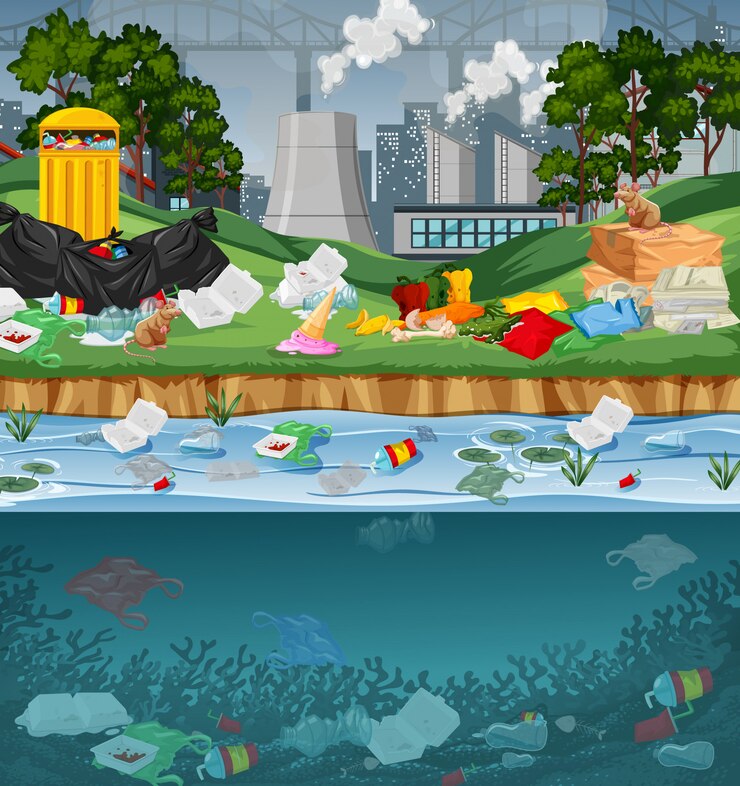
In This Article
- Plastic Production: A Historical Overview
- Thermoplastic and Their Role in Pollution
- The COVID-19 Pandemic and Plastic Production
- Environmental Consequences of Plastic Pollution
- Global Plastic Waste: A Shared Challenge
- Innovative Solutions to Combat Plastic Pollution
- What You Can Do to Reduce Plastic Pollution
- Conclusion
Plastic Production: A Historical Overview
Plastic was invented in 1907 by Belgian chemist Leo Hendrik Baekeland with the introduction of Bakelite, the first fully synthetic plastic that was inexpensive and non-flammable. Baekeland’s invention marked the beginning of the plastic revolution, as the lightweight material was used in various applications, especially during World War II. Plastics were utilised in manufacturing parachutes, helmets, and different military gear. At the end of WWII, plastic manufacturers turned their attention to the consumer market, and soon the material was used in construction, electronics, and packaging.
Today, plastics remain an important material in modern medicine, used in manufacturing life-saving medical devices and equipment for clean drinking water. The use of plastics since the early 1900s to this day has created a serious environmental challenge. The situation worsens as more plastics continue to be produced, with over 460 million metric tons manufactured each year, and this number is expected to increase. Only 9% of the plastics ever produced are recycled; the rest are either in landfills or in the ocean.
Thermoplastic and Their Role in Pollution
Thermoplastics such as polyethene (PE), polyvinyl chloride (PVC), polypropylene (PP), and polyethene terephthalate (PET) dominate the plastic market. These types of plastics are generally used for food packaging and are the most common materials found littered in landfills. According to the UNEP, 86% of all plastics produced globally are thermoplastics.
Polyethene, being the most popular thermoplastic, is divided into low-density (LDPE), linear low-density (LLDPE), and high-density polyethene (HDPE). These materials are used in making regular plastic bags, water bottles, and plastic packaging materials. Although they are recyclable, many of these plastic types still end up in landfills and the ocean.
| Plastic Type | Common Uses | Environmental Impact |
| Polyethylene (PE) | Plastic bags, bottles, packaging | Contributes to ocean pollution, landfill accumulation |
| Polypropylene (PP) | Food containers, bottle caps | Persistent in the environment, releases toxic chemicals during degradation |
| Polystyrene (PS) | Disposable cutlery, foam packaging | Non-biodegradable, difficult to recycle |
The COVID-19 Pandemic and Plastic Production
The world came to a standstill during the COVID-19 pandemic, leading to a 0.3% drop in plastic production in 2020. However, the demand for plastic increased due to the need for single-use plastics, such as personal protective equipment (PPE) and other plastic-packaged deliveries, which were necessary to contain the spread of the virus.
This rebound in plastic usage underscores the challenge of addressing plastic pollution, especially as the global economy returns to pre-pandemic levels.
Learn More: What Is a Biodegradable Garbage Bag and Why Use It?
Environmental Consequences of Plastic Pollution
Plastic pollution in our environment poses significant risks to ecosystems, the climate, and human health. The millions of metric tons of plastic waste that enter our waterways annually continue to cause irreparable harm to the environment.
#1. Microplastics and Nanoplastics: An Invincible Threat
Microplastics and nanoplastics are tiny particles derived from discarded plastics breaking down due to exposure to sunlight and wave action. These microplastics have polluted almost every corner of the planet, with plastic debris found at extreme depths in the ocean.
Microplastics enter the food chain, as traces of them have been found in human blood and the placenta. According to studies, the average person could be ingesting about 50,000 particles of microplastics each year.
Table: Key Studies on Microplastics
| Study | Findings | Significance |
| Galloway et al. (2017) | Microplastics have infiltrated marine food chains. | Microplastics are now part of our diets. |
| Schwabl et al. (2020) | Microplastics found in 100% of human stool samples. | Evidence of microplastics affecting humans. |
| Jambeck et al. (2015) | 8 million tons of plastic enter the oceans annually. | Plastic pollution has a far-reaching global impact. |
#2. The Impact on Marine Life
Years of pollution in the ocean continue to affect marine ecosystems. Plastic debris in the ocean is often ingested by sea turtles, whales, and seabirds, who mistake these non-biodegradable materials for food. Ingesting plastics can cause serious internal injuries, blockages, or even kill these sea creatures.
A study by the World Economic Forum suggests that by 2050, we could see more plastic in the ocean than fish (by weight) if the current trend continues.
The ingestion of plastic affects marine animals in various ways:
- Entanglement: Marine species are often entangled in plastic debris, such as fishing nets and plastic packaging materials.
- Toxic Chemical Exposure: Petroleum-based plastics contain toxic chemicals that leach into the soil and water, affecting plants and animals. These chemicals can enter the food chain and have been linked to cancer, endocrine disruption, and reproductive issues in marine species.
Case Study: Midway Atoll
The devastating effects of plastic on marine life can be observed in places like the Midway Atoll, an island located more than 2,000 miles from the nearest continent. Yet, the island’s beaches are littered with millions of pieces of plastic debris. Chris Jordan’s 2010 documentary, Midway, shows how seabirds on the island are dying from ingesting plastic debris, highlighting the far-reaching effects of pollution.
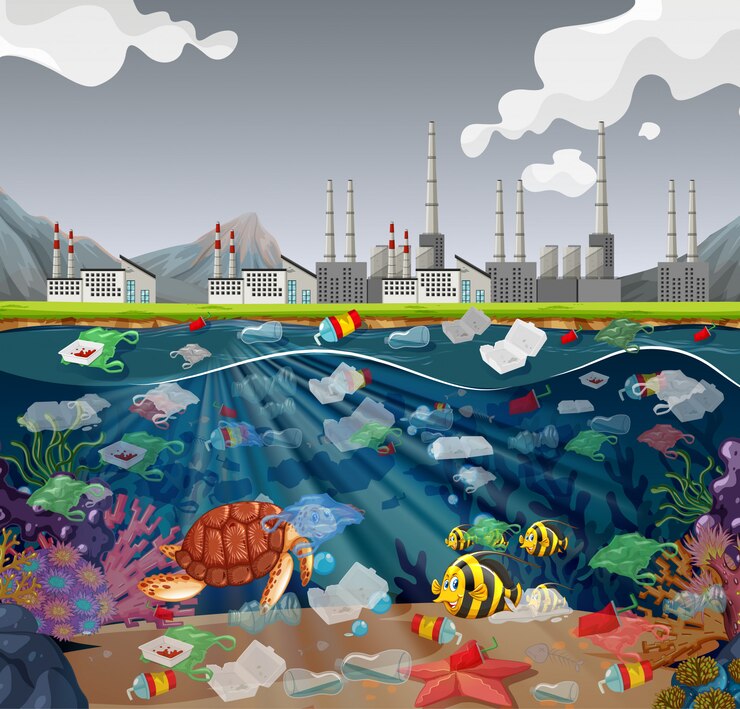
#3. Impact on Human Health
Petroleum-based plastics contain chemicals like bisphenol A (BPA) and phthalates. These chemicals can leach into food, water, and the environment, and they are known to be endocrine disruptors.
According to Dr. Leonardo Trasande, a professor at NYU School of Medicine, an expert in environmental health, long-term exposure to these chemicals can lead to health problems like reproductive disorders, neurodevelopmental issues, and even cancer.” A report by the World Health Organisation (WHO) corroborates this, stating that exposure to endocrine disruptors from plastics can cause developmental, reproductive, and immune problems in both humans and wildlife.
Additionally, a report by the United Nations Foundation warns that plastic pollution could account for 19% of the global carbon budget by 2040, further exacerbating the climate crisis.
#4. Ecosystem Damage and Loss of Biodiversity
Environmental pollution from plastic also affects terrestrial and freshwater ecosystems. Toxic chemicals from deteriorating plastic can lead to serious environmental contamination, polluting groundwater and reducing soil fertility.
According to National Geographic, plastic waste is one of the most widespread pollutants, impacting nearly 2,100 species of marine and terrestrial wildlife, including endangered ones. Plastic pollution and habitat loss continue to endanger many species, particularly in marine ecosystems.
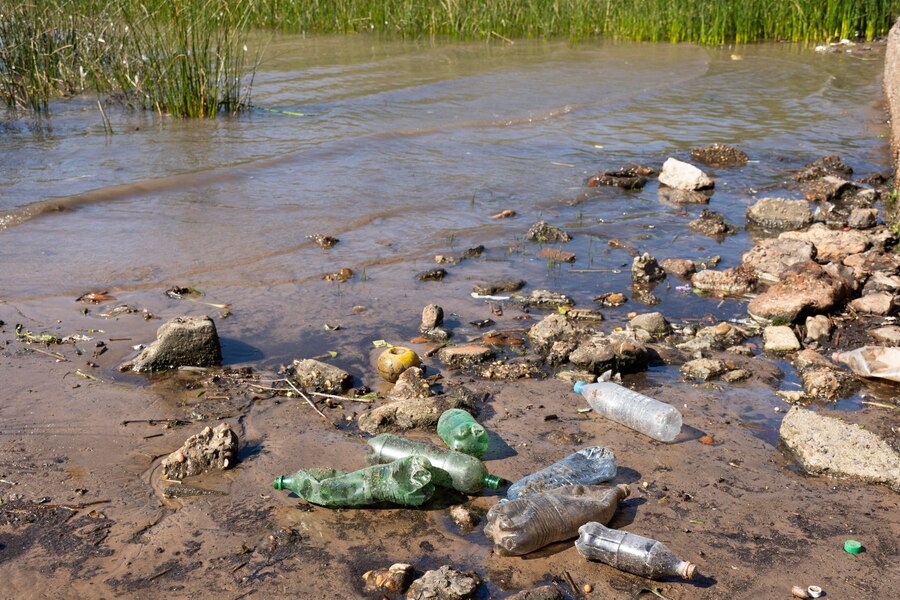
#5. Contribution to Climate Change
Plastic production is connected to the extraction and use of fossil fuels. According to a report by CIEL (Center for International Environmental Law), plastic production accounted for 3.8% of global greenhouse gas emissions in 2019. Experts believe this percentage would increase if plastic production continues unchecked.
Incinerating plastic in landfills is a common practice to reduce waste, but it releases tons of harmful greenhouse gases such as methane and carbon dioxide. According to a 2021 study, the contribution of plastic pollution to climate change is significant, yet often overlooked. By reducing plastic use, we can address both pollution and carbon emissions simultaneously.
Learn More: 20 Best Eco-Friendly Activities to Help Your Environment
Global Plastic Waste: A Shared Challenge
#1. Plastic Waste in Developing Nations
Plastic pollution, particularly in Asian and African countries, can be devastating due to poor waste management. Countries like India, Nigeria, and Indonesia lack adequate waste management infrastructure, leading to more plastic waste being dumped in rivers, streams, lakes, and informal sites. A study by Mamoona et al. (2024) found that 91% of plastic waste in low-income countries is either burned, dumped in open spaces or mismanaged, resulting in severe environmental and health consequences. The Ganges River in India, for example, remains one of the most polluted rivers in the world due to the large amount of plastic waste that flows through it.
In 2019, India generated approximately 9.4 million tons of plastic waste, representing about 3.1% of the global total. Rag-pickers—informal waste collectors—play a critical role in India’s waste management, though they often work in unsafe conditions with little recognition.
#2. Plastic Waste in Developed Nations
In first-world countries, the issue of plastic pollution presents itself differently. In the United States, only 9% of plastic waste collected at recycling facilities is actually recycled—the rest is either exported to other countries or sent to landfills. The World Economic Forum reports that the U.S. recycled only 5 to 6% of its plastic waste in 2021, a decrease from previous years due to global restrictions on waste imports.
In Europe, the EU has banned single-use plastics like cutlery and plates under its Single-Use Plastics Directive (2019).
#3. Governmental Policies on Plastic Pollution
Countries around the world are implementing strict policies to reduce plastic waste. The European Union’s Single-Use Plastics Directive, which bans plastic straws, cutlery, and disposable plates, has reduced waste and encouraged the use of biodegradable options. Germany has implemented its Extended Producer Responsibility (EPR) program, an initiative that holds manufacturers accountable for the waste generated by their products.
Developing countries like Kenya introduced a nationwide ban on plastic bags in 2017. Similarly, the Indian government has demonstrated its commitment to reducing plastic pollution through its Swachh Bharat Mission, which focuses on improving waste management.
Table: Notable Policies on Plastic Reduction
| Country | Policy | Impact |
| Kenya | Nationwide plastic bag ban (2017) | Reduced plastic bag usage by 80% in urban areas. |
| Germany | Extended Producer Responsibility (EPR) | Encourages recycling and sustainable packaging practices. |
| European Union | Single-Use Plastics Directive (2019) | Banned single-use plastics, reducing ocean-bound waste. |
#4. Corporate Responsibility
For years, multinational corporations have contributed to plastic pollution. However, some of these top brands are now facing increased pressure to lower their carbon footprint. Coca-Cola, Nestlé, and Unilever are among the leading companies that have pledged to use more recycled plastics in their packaging. However, some of these companies have been accused of greenwashing, and studies show they have yet to meet their sustainability targets.
A report by Greenpeace (2021) criticised these corporations for making “empty promises” while continuing to use more single-use plastics. Nevertheless, some progress has been made. For instance, Coca-Cola has committed to using 50% recycled material in its bottles by 2030.
Innovative Solutions to Combat Plastic Pollution
#1. Biodegradable Plastics and Alternatives
Bioplastics, made from natural sources like sugarcane, corn starch, and potatoes, are gentler on the environment compared to petroleum-based plastics. Bioplastics can break down under the right environmental conditions, while conventional plastics take years to degrade into microplastics. Polylactic acid (PLA) is one such bioplastic that is increasingly being used in packaging.
However, experts warn that bioplastics are not 100% environmentally safe. Dr. Michael K. Reddy, senior scientist at the National Renewable Energy Laboratory (NREL), cautions that while bioplastics have potential, they aren’t a silver bullet. “The next frontier in sustainable packaging is the integration of biodegradable polymers and nanotechnology, allowing us to create materials that function like traditional plastics but degrade more efficiently.”
#2. Plastic-Eating Enzymes
In 2016, researchers made a groundbreaking discovery of plastic-eating enzymes in a Japanese waste dump. These enzymes can break down polyethene terephthalate (PET). Advances in biotechnology could lead to the widespread use of these plastic-eating enzymes in waste management in the coming years.
#3. Ocean Cleanup Projects
Ocean clean-up initiatives are rapidly gaining momentum. One notable example is The Ocean Cleanup Project, which aims to remove 90% of floating plastic debris from the ocean using large-scale clean-up systems. Their technology includes interceptors placed in rivers to collect plastic waste before it reaches the sea.
#4. Extended Producer Responsibility (EPR)
Extended Producer Responsibility (EPR) programs hold manufacturers accountable for the waste generated by their products. Many governments advocate for EPR programs because they encourage manufacturers to adopt sustainable packaging options that reduce their carbon footprint.
Germany and Canada are two countries that have successfully implemented EPR programs, reducing plastic waste by incentivising recycling and sustainable design.
Learn More: 10 Benefits of Recycling to the Environment and Why You Should Get Involved
What You Can Do to Reduce Plastic Pollution
- Reduce Single-Use Plastics: Opt for reusable bags, water bottles, and cutlery whenever possible.
- Support Zero-Waste Products: Choose products with minimal or no plastic packaging.
- Participate in Local Cleanups: Join or organise a beach or community cleanup to help reduce plastic pollution in your area.
- Advocate for Policy Change: Write to your local representatives to support plastic bans, recycling initiatives, and sustainable practices.
Conclusion
Plastic pollution is a complex issue that affects ecosystems, wildlife, human health, and the climate. While plastics offer undeniable benefits, their environmental costs are far-reaching and often irreversible. The path to solving this global crisis requires a combination of innovative technologies, government policies, corporate accountability, and individual action.
As the world continues to grapple with the effects of plastic pollution, each of us must play our part—whether by reducing our personal plastic use or advocating for systemic changes that can create a lasting impact.

